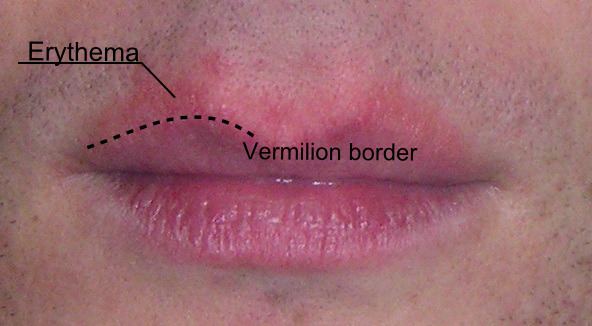Code TH H03.04.01.0.00010 | ||
 | ||
Latin pars intermedia labiorum oris | ||
The vermilion border (sometimes spelled vermillion border) is the normally sharp demarcation between the lip and the adjacent normal skin. It is thus the edge (border) of the red (vermilion) of the lip. It represents the change in the epidermis from highly keratinized external skin to less keratinized internal skin. It has no sebaceous glands, sweat glands, or facial hair.
There are two reasons for the border being red:
- The epithelium is thin.
- This epithelium contains eleidin which is transparent and the blood vessels are near the surface of the papillary layer, revealing the "red blood cell" color. At the angles of the mouth, there are sebaceous glands, without hair follicles, which are called Fordyce's spots.
The vermilion border is important in dentistry and oral pathology as a marker to detect disease, such as in actinic cheilitis.
Vermilionectomy
A vermilionectomy (sometimes spelled vermillionectomy) is the surgical removal of the vermilion border. It is sometimes performed to treat carcinoma of the lip.
References
Vermilion border Wikipedia(Text) CC BY-SA
